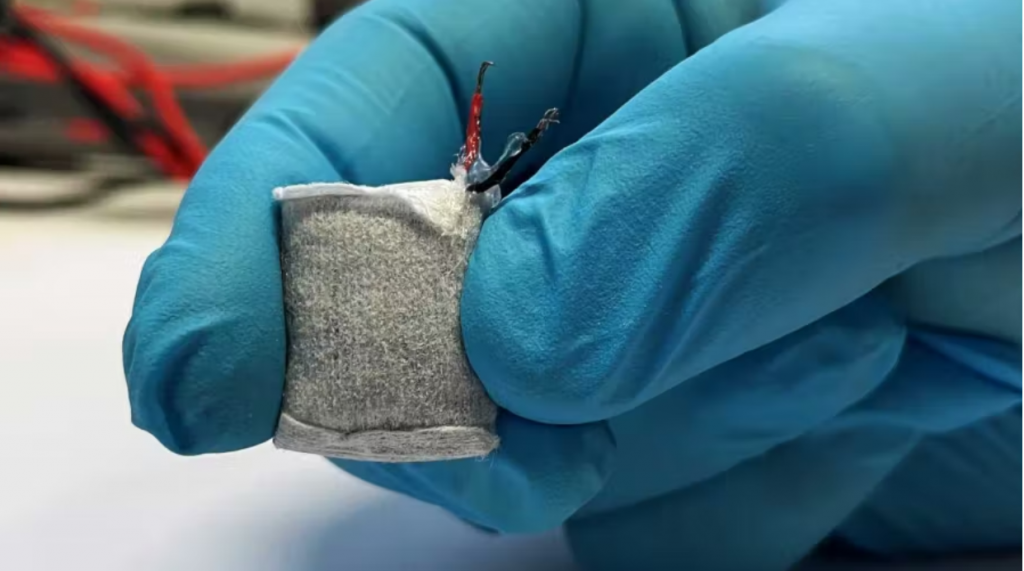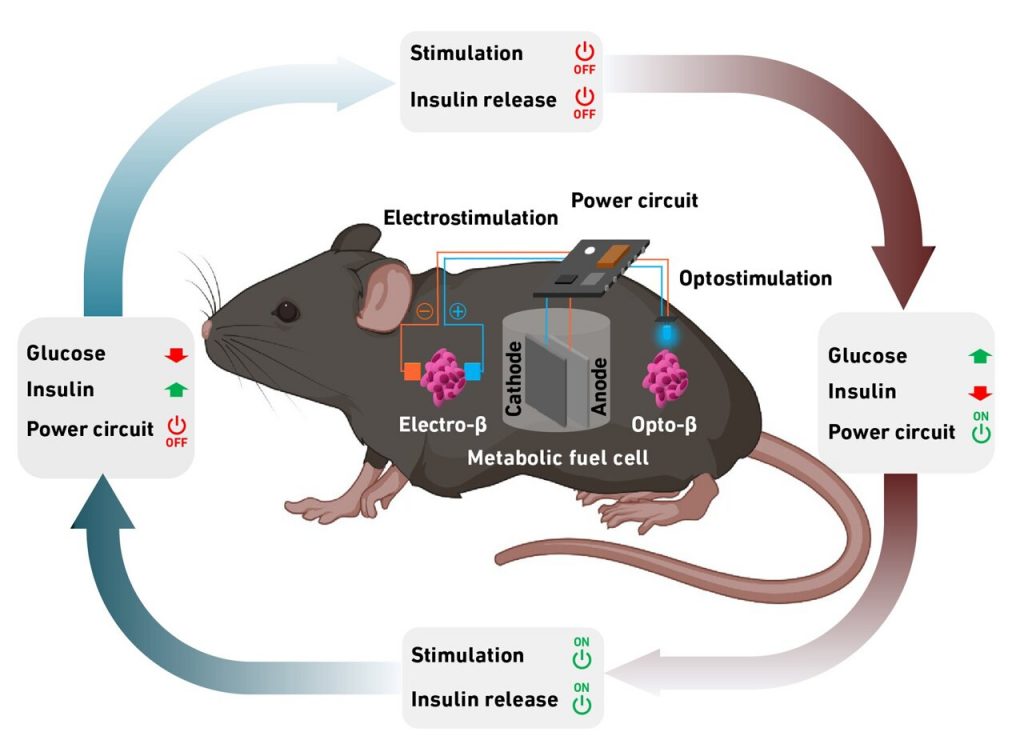Researchers from ETH Zürich have developed a “tea bag” fuel cell that can generate electricity directly from blood sugar, allowing implantable electronics to function without external power sources. The technology could be used to create implantable diabetes monitoring and treatment systems that regulate insulin and blood glucose levels.
The fuel cell is designed to harvest excess metabolic energy from carbohydrates that people consume in everyday life, which is then used to power biomedical devices. The tea-bag-shaped fuel cell contains an anode of copper-based nanoparticles capable of splitting glucose in the blood into gluconic acid and a proton, generating enough energy to power a low-power electronic implantable device.

The researchers used a prototype fuel cell to drive an in-body diabetes network. The fuel cell’s energy harvesting capabilities were used to light an LED and stimulate artificial beta cells with controlled light, resulting in the production and delivery of a controlled dose of insulin directly into the bloodstream. The circuit harvests enough energy for insulin production when blood sugar levels are too high and stops automatically when it drops to safe levels again.
The new system autonomously regulates insulin and blood glucose levels and could be used to treat diabetes in the future. The energy produced is also enough to provide communication facilities, allowing the device to be linked to a smartphone for monitoring or external control.
While the technology has potential, bringing it to market is far beyond the researchers’ financial and human resources. The team is actively searching for an industry partner with sufficient funding to develop the technology.

In conclusion, the tea bag fuel cell developed by ETH Zürich is a promising technology for the development of implantable diabetes monitoring and treatment systems. The system’s ability to autonomously regulate insulin and blood glucose levels could be life-changing for people with diabetes. However, the development of the technology requires significant financial and human resources, which highlights the need for partnerships between academia and industry to bring innovative technologies to market.


